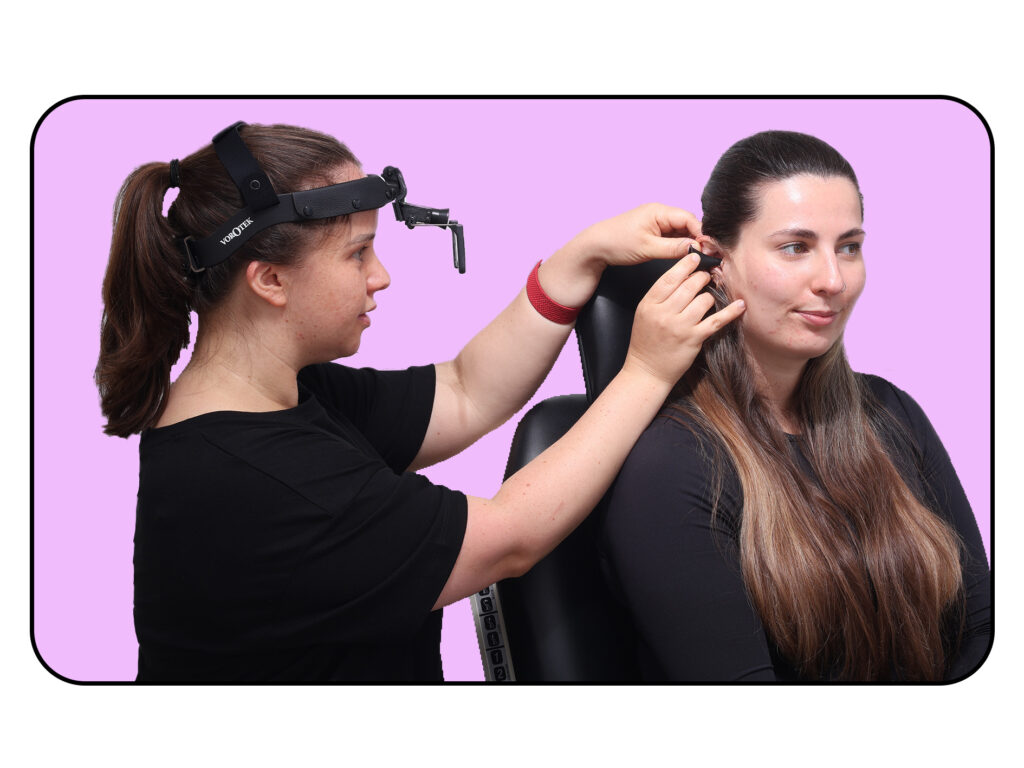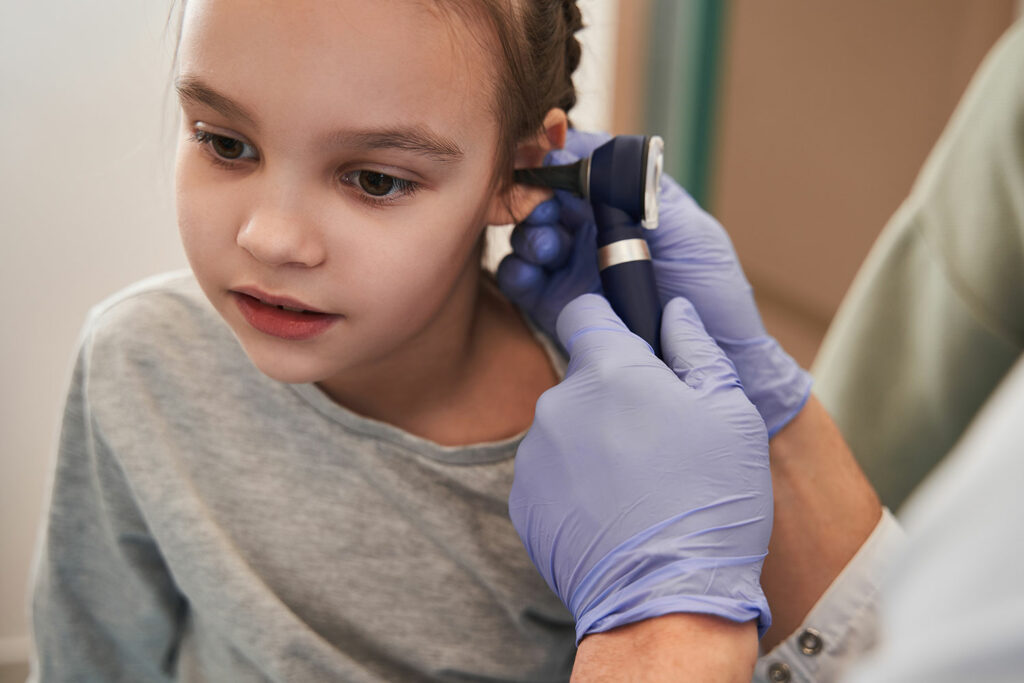Specialising in child and adult ear wax removal.

Ear wax also has moisturising properties that help stop the ear canal from becoming too dry and irritated.
Sometimes, ear wax can build up within the canal or become impacted, preventing it from naturally coming out of the ear. Several factors can contribute to this including excessive production, the use of cotton tips (eg “Q tips”) or other objects, unusually shaped ear canals or age.
When a person’s ear wax becomes impacted, it can cause discomfort, hearing loss, or even infection, which is why it’s important to manage wax buildup properly. Never attempt to remove the wax build up at home using any foreign objects, as these can push wax deeper into the canal and make removal harder.
Prior to attending your appointment with Northern Beaches Audiology, we recommend you consider softening the ear wax with over-the-counter ear drops/sprays to enhance both the effectiveness and comfort of the procedure. Appropriate use of softeners will increase the likelihood that the wax can be removed in one visit and reduce the need for any follow-up appointments.
Please note: If you have a history of ear infections, a perforated eardrum, or any ear surgery, please consult your doctor before using any type of wax softener.
Cotton tips and ear candles are NEVER recommended as they can lead to further damage and problems within the ear.
Should you experience symptoms of excessive wax build-up, further investigation may be warranted by an Ear, Nose and Throat specialist.
There are a few different techniques we use in the removal of your cerumen/wax buildup, including:
During the procedure, you may hear some noise from the equipment or feel a gentle pulling sensation.

After the removal, you may feel a difference in your hearing or a sensation of ‘lightness’ in the ear. It is normal to experience the following temporary effects:
If these symptoms persist or if you develop pain, discharge, or swelling, contact your clinician promptly.
While ear wax removal is generally safe, there are some risks to be aware of:
Your audiologist will take every precaution to minimise these risks and ensure the safest possible experience.
Please be aware there are several alternative ways to remove ear wax. These include:
If we are unable to remove all the wax in one session, we may advise you to continue using softening drops at home and return for a follow-up appointment. We will also provide guidance on how to prevent future build-up.
Should you be interested in booking in with one of our qualified clinicians for ear wax removal, feel free to contact the clinic at [email protected] or on (02) 9982 3439.
Feel free to contact the clinic to arrange a full diagnostic hearing assessment with one of our audiologists.
Office opening hours are between 8:30am to 4:30pm
Please call to make an appointment.